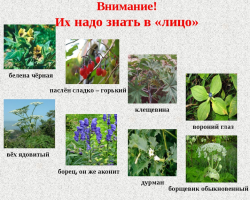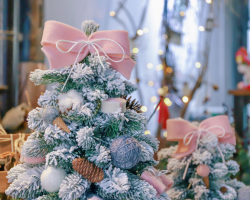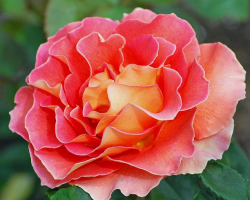In this article, we will talk, which is mold on plants, why it appears, and also how to eliminate it.
Content
- What is mold and is it dangerous for plants and people?
- Why seedlings were covered with mold: reasons
- How to prevent the appearance of mold on seedlings: prevention
- How to get rid of mold in seedlings in peat pots?
- How to destroy mold on earth with seedlings: methods
- Will soda from mold help?
- Will the ash from mold help?
- What drugs for mold on seedlings can be used?
- Hydrogen peroxide against mold on seedlings will help?
- Will Nystatin help against mold on seedlings?
- Does metronidazole help against mold on seedlings?
- Will potassium permanganate help with mold on seedlings?
- Video: Quick way to overcome mold when growing seedlings
Anyone who is only learning to grow seedlings may encounter the problem of mold on seedlings. She looks like a white plaque, but with close consideration it is immediately clear that it is she. When the mold begins to appear, the gardener has many questions - why, where, what to do? Let's figure out what mold is, where does it come from and how to deal with it.
What is mold and is it dangerous for plants and people?

The mold itself on seedlings and on other plants is a microscopic fungus. He creates branching threads. It is called GIF. As you know, mushrooms multiply with a dispute. They constantly hide in the air and can settle on different objects. Organic residues that did not have time to decompose are the best nutrition for the fungus, and heat and wet air are considered the best conditions for growth.
You will be surprised, but mold differs with vitality. She is not afraid of any weather conditions, so even if you freeze the soil, it is not a fact that you will get rid of mold.
At the same time, mold is quite dangerous for people. Her disputes fall into the respiratory tract and ultimately settle in the lungs. It does not remove from the body, and therefore its accumulation leads to the development of diseases, such as allergies or poisoning. Especially dangerous mold is for those who have reduced immunity.
For plants, mold also does not represent anything good. In particular, it has such an influence as:
- If the mold is not cleaned for too long, then seedlings can get sick with a black leg, which will no longer be cured. The plant will ultimately die
- Mold does not allow plants to receive normal nutrition. It gives certain products of life, and they have an acidic reaction. This leads to oxidation and alkalization of the soil
- Enough oxygen ceases to flow to plants
- Plant immunity is getting worse and they do not regenerate so quickly
Mold is the greatest danger for small plants. Adult seedlings are already able to secrete substances to suppress the growth of fungi, but small plants will have to help with this.
Why seedlings were covered with mold: reasons
When the spores of mold fall into the soil, it is not a fact that it will begin to develop. The fact is that different factors affect development. That is, favorable conditions should be created for mold. These factors are as follows:
- Too high humidity. If you water the plants more often and more than required, then an excess of moisture is formed in the soil. And this is very fond of fungi.
- Wet air. Increased air humidity is also unfavorable for seedlings. At the same time, mold is very well perceived and begins to actively develop.
- High air temperature. The mold loves when it is very warm. In general, if all three conditions are met, then the appearance of mold is clearly ensured.
- Bad soil. If the soil does not pass water and soil very well, then this will necessarily lead to stagnation of water and a lack of oxygen.
- Increased acidity. Since the fungi themselves oxidize the soil, they love when it is acidic.
- Bad drainage or its absence. The drainage system must be formed correctly. It is provided by creating holes or a special drainage layer. This is required to remove moisture. Accordingly, if it is organized incorrectly, then moisture stagnation is provided.
- Lack of lighting. Plants need a lot of light. That is why they need to ensure the right daylight day. If this is not done, then the plants will lack.
- The remains of an organic substrate in the ground. For example, if you introduced some compost that did not decompose, it is better to remove it. The fact is that its remnants serve as food for mold.
How to prevent the appearance of mold on seedlings: prevention

If you have no mold on seedlings never appeared or at this time you do not have it, then you can safely carry out prevention to prevent the development of mold.
So, if the seeds have not yet been sown, then preventive measures may be as follows:
- To get started, make the soil. It must correspond to several characteristics- to have loose, lightness, as well as good water and breathability.
- Consider pH soils. It should be in the area of \u200b\u200b6.5-7. This is a neutral indicator. If the acidity is high, then the fungi will develop. Keep in mind that peat increases the acidity of the soil, and therefore try to make the level balanced. If suddenly the acidity has increased, then it can be reduced using chalk, dolomite flour and wood ash.
- Before you do crops, you need to disinfect the soil. For example, take it to the frost for a week, get in the oven or steal in fabric in a water bath.
- When disinfection has already been carried out, preferably still treat the soil with special meanswhich restore useful microflora. For example, phytosporin or alirin.
- Be sure to pay attention to the composition of the soil mixture. River sand, as well as perlite or vermiculite, should be added to it. The latter absorb excess moisture, and also make the soil loose.
- Do not forget about drainage. Make several holes for draining water or put expanded clay, perlite or broken brick to the bottom. The drainage system allows excess moisture and does not allow fungi to develop.
- Before sowing, the seeds should be disinfected. This will remove disputes from them if they are available. For example, you can treat chlorhexidine. A 0.05% solution is taken enough and place the seeds in it for half an hour.
If you have already sowed the seeds, then you can also carry out prevention. To do this, use the following methods:
- Regular ventilation. Even before the emergence of seedlings, the seeds have to be in greenhouse conditions. Do not leave them constantly in them. It is recommended to ventilate them in the morning and evening for 20 minutes. Before closing the greenhouse, remove condensate to reduce humidity.
- Constantly ventilate the room itself, But keep in mind that there should not be a draft. It is destructive for plants.
- Follow the irrigation mode. When you are sowing, the soil is moistened with a pulverizer. In the future, moisturize the land carefully, trying to maintain moderate humidity. Until the shoots showed up, continue to use the pelvelizer, and when the seeds germinate, then use the sprint or give water through the pallet. Keep in mind that there should not be a lot of moisture in the ground.
- Control acidity. If you think that the soil has increased acidity, then place the pumped river sand with wood or activated carbon on the surface of the soil. Or make a solution (0.5 tbsp per 1 liter of hot water) and pour the plants with it.
- Follow the lighting. If plants have few sunlight, then be sure to use phytolamps. Please note that it takes 12-14 hours of daylight hours.
Remember that mold is much more difficult to remove than to carry out prevention. So if you do not want to face difficulties when growing plants, then try to carry out regular prevention.
How to get rid of mold in seedlings in peat pots?

Peat containers differ in that they can not be thrown away during transplantation, but to bury them along with seedlings. However, often mold on seedlings does not appear during growth, but this happens on the pots themselves. What to do in this case?
In this case, there are several options for:
- Transplant the seeds into new containers, filling them with new soil. Be sure to adjust the amount of watering
- Process the Earth and the containers themselves using "phytosporin"
- Wrap the containers into a fabric, previously moistened in vinegar and soda solution
- Treat the surface of peat pots with alcohol
Spray containers, as well as seedlings with a solution of hydrogen peroxide. Only 2 tbsp is required per liter of water.
It is important to take into account that mold is difficult to remove from such containers, because fungi germinate directly into the walls of the container itself, and therefore if the lesion is strong, you will have to destroy it. Most just because they do not use peat containers, because mold appears in them.
If you adhere to all the conditions for caring for seedlings, then the mold will not appear in it. However, if the fungus has already covered the ground, then this is very bad. We must urgently fight him, otherwise the plants will die.
How to destroy mold on earth with seedlings: methods
You can eliminate mold on seedlings in several ways. In this case, the choice of the method depends on how much the soil was affected. However, there are several effective methods that can really help even without the use of chemical or folk remedies:
- First, try just loosening the soil. So the soil will receive more oxygen. Perhaps the fungus will stop developing
- Reduce the amount of watering or water
- Ventilate seedlings more often
- If you found small foci of mold on the ground, then pour quartz sand on the upper layer of the soil
You can, of course, try to dry the earth, but there is only no guarantee that the mold will disappear. The fact is that the fungi will really stop developing for a while, but only with new watering will they again develop and grow.
Will soda from mold help?

When mold appears on seedlings, you can use simple food soda to combat it. It is recommended to mix it with other antifungal agents, and not in its purest form. This is due to the fact that soda no longer affects the soil, but on the plant itself.
- A solution of soda helps the plant if it was struck by mold. To prepare it, mix a liter of warm water and 1 tbsp. food soda. Add a little detergent or liquid soap. This will help degrease the leaves and stalk of the flower, which will allow the solution to stick to the affected places better.
- Such a mixture must be treated every three days. If this helps, then for prevention, you can repeat it once in a couple of weeks.
- By the way, soda allows you to fight not only fungal diseases, but also various parasites. It also helps to eliminate stains from the leaves.
- When transplanting, as well as for prevention, pots, if they have mold, you can clean with baking soda. To do this, take a small pinch and rinse the pot from the outside and inside it. This will not only remove the rest of the dispute, but also disinfect pots.
Will the ash from mold help?
Yes, indeed, mold on seedlings can be eliminated using a solution of ash. To do this, dilute 2 tbsp. In a liter of hot water. Let it brew a little solution. By the way, if you do not have ash, then activated carbon is suitable. As a rule, it is in any first -aid kit.
What drugs for mold on seedlings can be used?
To get rid of mold on seedlings, you can use chemicals that specialists have developed for this purpose:
- Fitosporin
- Fundazole
- Oxich
- Mikosan
- Vitaros
The drug dissolves in water. It is important to consider the dosage before use, because it should be strictly observed. The resulting solution is processed. By the way, after watering, it is advisable to loosen the ground a little so that it does not dry out. In addition, add the soil with sand or ash.
Hydrogen peroxide against mold on seedlings will help?

Hydrogen peroxide is a colorless transparent liquid. It dissolves perfectly in water, alcohol and broadcasts. This is an excellent oxidizing agent and at the same time safe. It can eliminate mold easily. That is why peroxide is so often used for plants as a bactericidal agent. Moreover, it improves soil aeration well.
To care for seedlings, it is enough to do watering under the root and spraying. For these purposes, a solution is used. In pure form, peroxide is not used. So, 25-30 ml is bred per liter of water. You need to spray seedlings 3-4 times. The product allows you to cleanse the soil of fungi and bacteria, which allows you to develop seedlings more intensively.
Before transplanting seedlings on the bed, place the roots in a solution of hydrogen peroxide. Keep from several hours to a day. Thanks to active oxygen, the bacteria die, and the tissues are saturated with oxygen. This leads to their healing, and also makes them grow faster.
You can also treat indoor plants. This is done a couple of times a week.
Will Nystatin help against mold on seedlings?
Nystatin also helps against mold on seedlings. It is produced in the form of tablets. They can simply be crushed and put in the ground, or diluted one tablet per 1 liter of water and pour seeds with this solution.
Does metronidazole help against mold on seedlings?
Mold in seedlings helps eliminate metronidazole. Initially, this tool is designed to combat fungi and inflammation. It is effective for people, but also for plants. To cure seedlings, just take a metronidazole tablet per liter of water. By the way, it dissolves eggs in water very well.
The solution allows you to protect seedlings from almost all diseases that can hit it. You can simply water them, or do spraying.
If you need to cure already sick plants, then everything is much more complicated, because there are almost no means that can restore plants that are ill black. They will have to be removed with the ground in order to prevent the spread of the infection further.
Will potassium permanganate help with mold on seedlings?

Manganese is also famous for its effectiveness for plant processing. It allows you to remove mold on seedlings. Conspecration is a chemical compound of potassium permanganate, which allows you to kill different types of dispute, as well as saturate plants with potassium useful for them.
To cure the plants from mold, first remove the upper layer of the earth and pour slightly fresh soil. Dry the soil slightly and spill with a pink solution. Leave it so until the soil is completely dry. The procedure is recommended to be repeated once a month.
By the way, some indoor plants do not tolerate potassium permanganate very well, and therefore it is better to use a solution for them only with extreme necessity.
Video: Quick way to overcome mold when growing seedlings
Read also:
Peppers seedlings: diseases and pests
Indoor lemon - care, reproduction, illness, treatment, pests and varieties: Description







